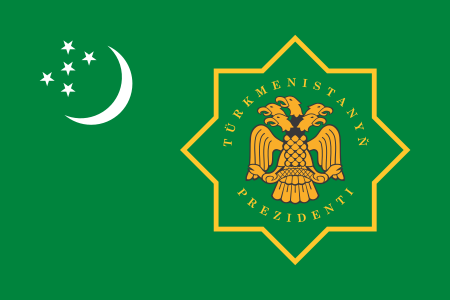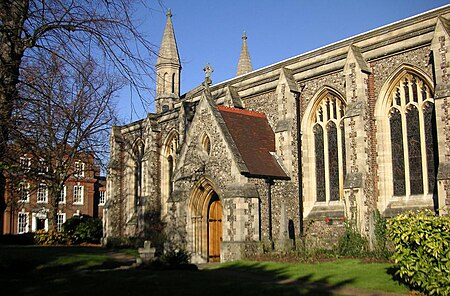Doug Anthony
| |||||||||||||||||||||||||||||||||||||||||||||||||||||||||||||||||||||||||||||||||||||||||||||||||||||||||||||||||||||||||||||||||||
Read other articles:

此條目可参照英語維基百科相應條目来扩充。 (2021年5月6日)若您熟悉来源语言和主题,请协助参考外语维基百科扩充条目。请勿直接提交机械翻译,也不要翻译不可靠、低品质内容。依版权协议,译文需在编辑摘要注明来源,或于讨论页顶部标记{{Translated page}}标签。 约翰斯顿环礁Kalama Atoll 美國本土外小島嶼 Johnston Atoll 旗幟颂歌:《星條旗》The Star-Spangled Banner約翰斯頓環礁地�…

土库曼斯坦总统土库曼斯坦国徽土库曼斯坦总统旗現任谢尔达尔·别尔德穆哈梅多夫自2022年3月19日官邸阿什哈巴德总统府(Oguzkhan Presidential Palace)機關所在地阿什哈巴德任命者直接选举任期7年,可连选连任首任萨帕尔穆拉特·尼亚佐夫设立1991年10月27日 土库曼斯坦土库曼斯坦政府与政治 国家政府 土库曼斯坦宪法 国旗 国徽 国歌 立法機關(英语:National Council of Turkmenistan) 土�…
2020年夏季奥林匹克运动会马来西亚代表團马来西亚国旗IOC編碼MASNOC马来西亚奥林匹克理事会網站olympic.org.my(英文)2020年夏季奥林匹克运动会(東京)2021年7月23日至8月8日(受2019冠状病毒病疫情影响推迟,但仍保留原定名称)運動員30參賽項目10个大项旗手开幕式:李梓嘉和吳柳螢(羽毛球)[1][2]閉幕式:潘德莉拉(跳水)[3]獎牌榜排名第74 金牌 銀牌 銅牌 �…

莎拉·阿什頓-西里洛2023年8月,阿什頓-西里洛穿著軍服出生 (1977-07-09) 1977年7月9日(46歲) 美國佛羅里達州国籍 美國别名莎拉·阿什頓(Sarah Ashton)莎拉·西里洛(Sarah Cirillo)金髮女郎(Blonde)职业記者、活動家、政治活動家和候選人、軍醫活跃时期2020年—雇主內華達州共和黨候選人(2020年)《Political.tips》(2020年—)《LGBTQ國度》(2022年3月—2022年10月)烏克蘭媒體�…

الهيئة العامة للاستثمار (الكويت) تفاصيل الوكالة الحكومية البلد الكويت تأسست 23 فبراير 1953 المركز محافظة العاصمة في الكويت29°21′52″N 47°58′36″E / 29.36444444°N 47.97666667°E / 29.36444444; 47.97666667 الإدارة موقع الويب الموقع الرسمي تعديل مصدري - تعديل 29°21′52″N 47°58′36″E&…

هذه مقالة غير مراجعة. ينبغي أن يزال هذا القالب بعد أن يراجعها محرر؛ إذا لزم الأمر فيجب أن توسم المقالة بقوالب الصيانة المناسبة. يمكن أيضاً تقديم طلب لمراجعة المقالة في الصفحة المخصصة لذلك. (مايو 2020) هذه المقالة يتيمة إذ تصل إليها مقالات أخرى قليلة جدًا. فضلًا، ساعد بإضافة وصلة…

American economist & Nobel laureate (born 1942) Robert F. Engle IIIEngle in 2022Born (1942-11-10) November 10, 1942 (age 81)Syracuse, New York, U.S.EducationWilliams College (BS)Cornell University (MS, PhD)Academic careerInstitutionNew York University, since 2000University of California, San Diego, (1975–2003)Massachusetts Institute of Technology, (1969–1975)FieldEconometricsDoctoraladvisorTa-Chung Liu[1]DoctoralstudentsMark WatsonTim BollerslevInfluencesDavid HendryContribu…

Pour les articles homonymes, voir Pekka. Pekka HimanenPekka Himanen en 2006BiographieNaissance 19 octobre 1973 (50 ans)HelsinkiNationalité FinlandeFormation philosophieActivités Philosophe, informaticienAutres informationsA travaillé pour Université de Californie à Berkeleymodifier - modifier le code - modifier Wikidata Pekka Himanen est un philosophe finlandais. Il travaille, entre autres, sur les aspects philosophique et sociologique de l'informatique. Biographie Il est élève de l'…

كلية الملك عبد الله الثاني لتكنولوجيا المعلومات شعار كلية الملك عبد الله الثاني لتكنولوجيا المعلومات (الجامعة الأردنية)شعار الكلية مبنى الكلية. الشعار المكان الذي يمكنك من خلاله العثور على البيئة المعلوماتية المثلى.[1] معلومات التأسيس 2000 (منذ 24 سنة) النوع كلية جامعية حك�…

Artikel ini terlalu bergantung pada referensi dari sumber primer. Mohon perbaiki artikel ini dengan menambahkan sumber sekunder atau tersier. (Pelajari cara dan kapan saatnya untuk menghapus pesan templat ini) Project MUSEProject MUSE logo.pngProduserJohns Hopkins University Press (Amerika Serikat)Sejarah1993 - sekarangAksesBiayaBerlanggananCakupanKedalaman catatanIndeks, abstrak & teks lengkapFormatBuku & jurnal, artikel perdagangan dan majalahTautan Situs web Daftar judul Project MUSE,…

Men's national association football team representing Uruguay This article is about the men's team. For the women's team, see Uruguay women's national football team. UruguayNickname(s)La Celeste (The Sky Blue) Los Charrúas (The Charrúas)AssociationAsociación Uruguaya de Fútbol (AUF)ConfederationCONMEBOL (South America)Head coachMarcelo BielsaCaptainJosé María GiménezMost capsDiego Godín (161)Top scorerLuis Suárez (68)Home stadiumEstadio CentenarioFIFA codeURU First colours Second colour…

Formal advisory body of Saudi Arabia Saudi Consultative Assembly مجلس الشورى السعوديMajlis ash-Shūra as-SaʿūdiyyTypeTypeUnicameral LeadershipSpeakerAbdullah ibn Muhammad Al ash-Sheikh since 15 February 2009 Seats150Meeting placeAl Yamamah Palace, RiyadhWebsiteOfficial English Site The Consultative Assembly of Saudi Arabia (Arabic: مجلس الشورى السعودي, romanized: Maǧlis aš-Šūrā s-Saʿūdiyy), also known as Majlis ash-Shura or The Shura Council, is th…

Senato di MilanoSenatus Excellentissimus Mediolani Stato Stato di Milano Istituito1499 daLuigi XII di Francia Operativo dal1499 - 1786 Soppresso1786 Soppresso daGiuseppe II d'Asburgo-Lorena Numero di membri27 SedeMilano IndirizzoPalazzo del Senato, via Senato, 10 - Milano Modifica dati su Wikidata · Manuale Il Senato di Milano (Senatus Excellentissimus Mediolani) fu uno degli organi governativi più importanti dello Stato di Milano, investito di funzioni giurisdizionali e legislative, che …

Disambiguazione – Città metropolitane rimanda qui. Se stai cercando l'elenco delle città metropolitane italiane, vedi Città metropolitane d'Italia. Questa voce o sezione sugli argomenti diritto e geografia ha un'ottica geograficamente limitata. Motivo: si parla di città metropolitane esclusivamente nell'ordinamento italiano quando invece il concetto esiste sia a livello giuridico, che a livello pratico in campo internazionale. Contribuisci ad ampliarla o proponi le modifiche i…

Questa voce sull'argomento stadi di calcio della Russia è solo un abbozzo. Contribuisci a migliorarla secondo le convenzioni di Wikipedia. Stadio Dinamo Informazioni generaliStato Russia UbicazioneMosca Inizio lavori1923 Inaugurazione17 agosto 1928 Chiusura2011 Demolizione2011 Ristrutturazione2009 ProprietarioDinamoVTB Bank Intitolato aLev Yashin Informazioni tecnichePosti a sedere36 540 Pista d’atleticaPresente Dim. del terreno105 х 68 Uso e beneficiariCalcio Dinamo Mosc…

Church in Hertfordshire, England This article needs additional citations for verification. Please help improve this article by adding citations to reliable sources. Unsourced material may be challenged and removed.Find sources: Church of St Peter, St Albans – news · newspapers · books · scholar · JSTOR (December 2010) (Learn how and when to remove this message) ChurchSt Peter's Church, St AlbansSt Peter's Church, St AlbansDenominationChurch of EnglandChur…

Challenger of Dallas 2008Sport Tennis Data28 gennaio - 3 febbraio CampioniSingolare Amer Delić Doppio Benedikt Dorsch / Björn Phau 2007 2009 Il Challenger of Dallas 2008 è stato un torneo di tennis facente parte della categoria ATP Challenger Series nell'ambito dell'ATP Challenger Series 2008. Il torneo si è giocato a Dallas negli Stati Uniti dal 28 gennaio al 3 febbraio 2008 su campi in cemento indoor e aveva un montepremi di $50 000. Indice 1 Vincitori 1.1 Singolare 1.2 Doppio 2 Collegamen…

国际电信联盟国际电信联盟Union internationale des télécommunicationsInternational Telecommunication UnionUnión Internacional de TelecomunicacionesМеждународный союз электросвязиالاتحاد الدولي للاتصالات國際電信聯盟的標誌簡稱国际电联ITUUIT成立時間1865年5月17日類型聯合國專門機構法律地位運作中總部 瑞士日内瓦秘书长多琳·博格丹·马丁(英语:Doreen Bogdan-Martin)副�…

Citroën Type 55 Type 55 du Service incendie de la SNPE. Marque Citroën Années de production 1953 - 1967 Classe Utilitaire léger Chronologie des modèles Type 45 Belphégor modifier Le camion Citroën 55, dit U55, apparaît en 1953, succédant au type 45. Sa production dure jusqu'en 1965, année au cours de laquelle il est remplacé par le surnommé Belphégor. Le 55 est équipé d'un six cylindres essence de 4,58 litres développant 73 ch et d’un six cylindres Diesel de 5,18 litres p…

Elementos de la identidad sexual: identidad de género, expresión de género, sexo y orientación sexual. La identidad sexual o identidad de sexo alude a la percepción que un individuo tiene sobre sí mismo respecto a su propio sexo en función de la evaluación que realiza de sus características físicas o biológicas[1][2][3] que «generalmente refleja la apariencia física externa y el rol típicamente vinculado al sexo que uno desarrolla y prefiere».[4] En té…




